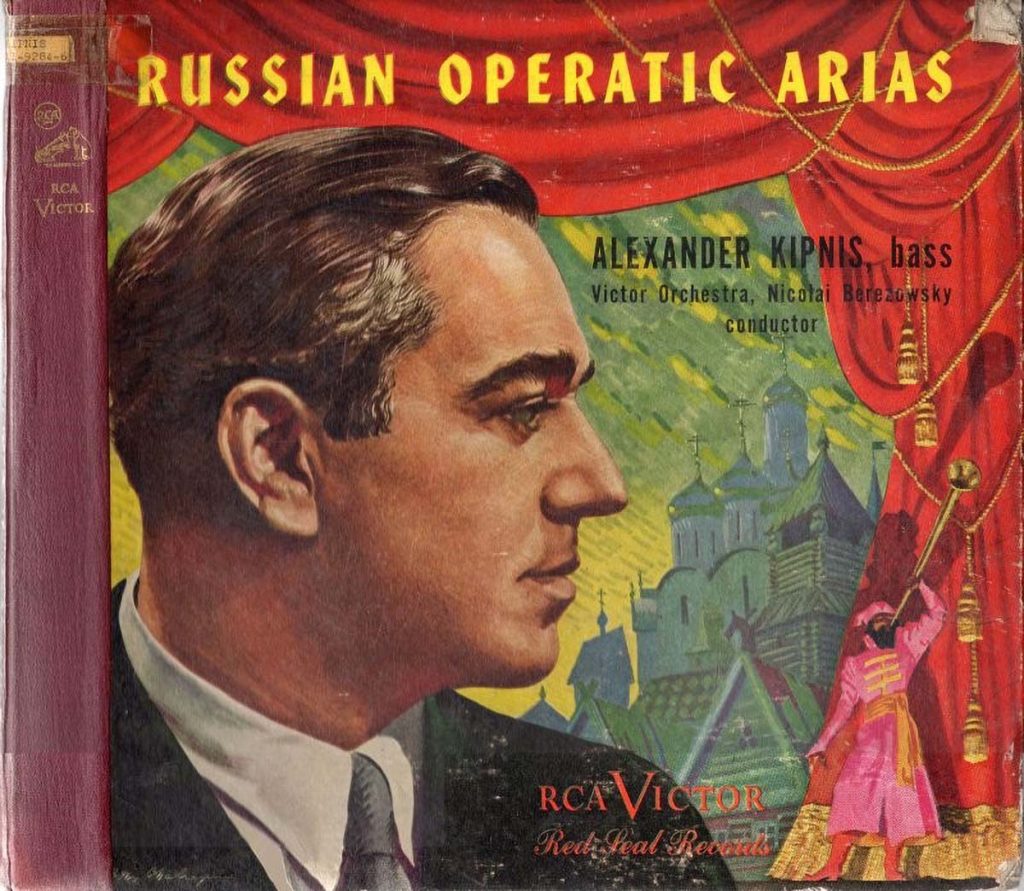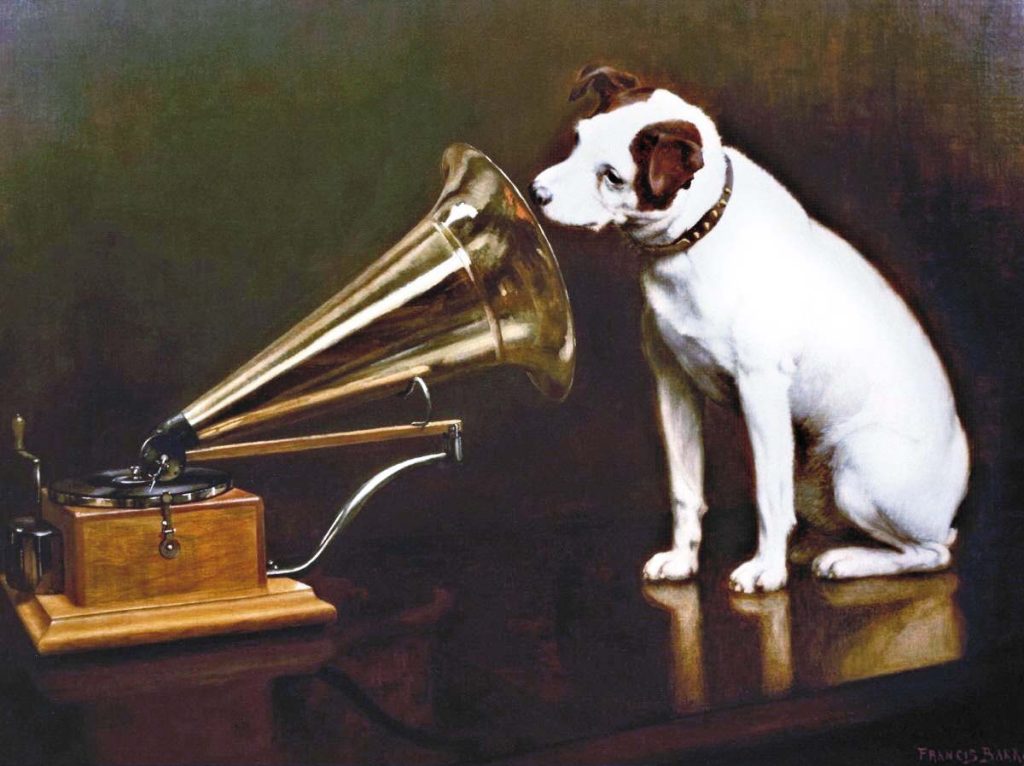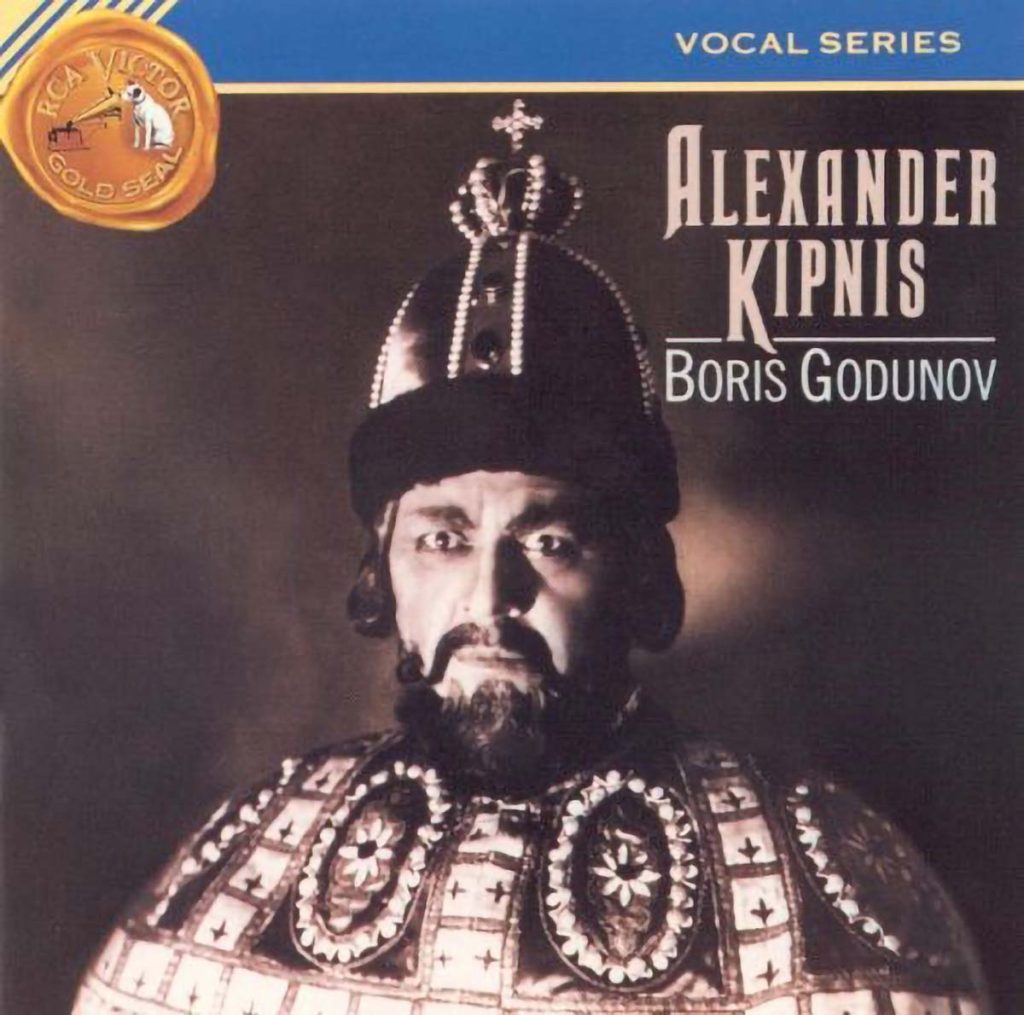Over the years as a producer and engineer, I’ve come to expect the unexpected, even when it’s something as familiar as the sound of my grandfather’s voice.
FIDELITY cooperation with Copper magazine.
Read this article also in Copper.
Astute listeners can easily tell the difference between good and bad sounding recordings; and a great artist is immediately evident vs. a mediocre one, even many decades after their rise to stardom and notoriety has faded. Likewise, the style of music and it’s particular performance affectations almost always come and go with the era in which they were first invented or embraced. So it goes that classical music has been replaced by Jazz and then supplanted by Rock and Pop, Metal, Fusion, Rap… an entire legion of different worldwide trends in music making over the last century and a half has come and gone with people’s fancies, year in and year out. But names like Enrico Caruso, Judy Garland, Frank Sinatra, and (as it turns out) Alexander Kipnis live on, especially because their careers were luckily captured on commercial picture and sound medias of the time, and now distributed through our own version in the form of YouTube, Vimeo, and other streaming media sites.
When I was growing up, the Stereo LP, Open Reel Tape, and even Cassette tapes were the media of the day, and we (as a family) were lucky enough to hear and see so much of it, thanks to my father’s being a keyboardist and a reviewer at the once famed Stereo Review magazine, for nearly 30 years. And still, we also listened to 78s: the big, heavy and fragile 12″ disks that were the state of the art until 1948 or so when the long playing (LP) record first made it’s debut. So monumental was the sonic improvement (still in Mono, though) that critics and amateur listeners alike both hailed the LP as a sonic revolution. Yet here we are today mostly thinking that 78s, LPs and analog tapes are vintage formats, incapable of living up to today’s best efforts, digitally in particular, or otherwise; the assumption being that newer technology must provide better fidelity, and the evidence would mostly seem to support that contention.
Well, my grandfather turned out to be quite a famous musician, a bass at the Metropolitan Opera in NYC (during the end of his long career) and also a touring soloist of the world music scene for over four decades. And his recorded legacy is profound and amazing for two reasons: 1) his career spanned the early part of 78s — known as the Acoustical Era (all analog — no electricity in the signal path) but also the later part — the Electrical Era (with microphones and amplification); two very distinctive sounding eras in our worldwide recorded history. And 2) he was a performer of immense presence and stature, subtle in delivery and inflection but also quite emotional and often humorous — a true emoter of feelings in his work. Quite simply, he was as famous as Caruso or Sinatra in his day and was featured on numerous recordings, like them, distributed all over the world on many different labels.
Enrico Caruso (from 1906):
It is possible, therefore, to use these historic formats as an acoustical time machine, capable of transforming our present into the past that these musicians lived and worked in. Of course, I hear someone saying, “these historic formats sound restricted in frequency and dynamics, and often have ridiculous amounts of surface noise, clicks, pops, swish, and other distortion in addition to being monaural (one channel).” Well, as much as I personally have already realized the contrary growing up — that older formats (like 78s), properly played back, can offer just as much and even more of a sonic illusion to reality as anything we have today and for the last 50 years, I recon, it wasn’t until the day I was invited to hear Ambiophonics (a specialized stereo delivery process) at inventor, Ralph Glasgal’s, house that I truly understood the full capability of both the Acoustical 78 RPM Disk and my grandfather’s actual performing capabilities.
Ralph had staged a genuine Victrola from the mid-1920’s in his living room: a tall and wide space with plenty of furniture and a few carpets amongst the artwork adorning the walls. The phonographs of this period were either tabletop models most have seen with a fluted horn or this larger standalone piece of furniture that contained the turntable on top, with a hand operated arm and stylus made of cactus needles (or often steel), and a large radiator horn located below venting out the front past twin doors which opened to reveal it, and a library of 50 – 60 disks below.

From this library, Ralph withdrew and played some amazing examples of my grand papa singing at his finest! To say I was charmed by this demonstration would be to put it mildly. You see, the combination of my grandfather’s recording played back on a music system of the same time period made all the difference since both the tone, authority, dynamics, and brilliance of his performances were easily and clearly on display… but with a total absence of any audible surface noise, pops, clicks, or swish. In fact, the presentation verged on being realistic at a fidelity and volume level we hardly if ever hear from recordings, today; regardless of when they were made or the equipment and engineers involved.
Judy Garland (from 1942 in Stereo):
Why should this be? It turns out that the state-of-the-art back in the mid-1920’s was pretty good, and in fact with no electrical amplification in the signal path all the way from the original performer(s) through to the playback horn in this Victrola, the fidelity was stunning. And the way the producers and engineers of the day balanced the sound of an entire orchestra against my grandfather’s voice so they both are easily heard together is really quite simple and functional: the orchestra was located farther away from the recording horn (not a microphone but and acoustical lens) in the same room while my grandfather was physically much closer. The inherent limitations and strengths of the 78 rpm shellac disk were well known and (apparently) well considered and compensated for in the recording and playback chain of the day. Thus, when the needle hit the groove, and the first notes emanated from the Victrola’s horn, my grandfather sounded magnificently alive, transparent, immediate, and scintillating… like he and the orchestra were in the room, with us!
Now I understand if most of you reading this are thinking something like, “Poppycock! There is no way a 78 rpm disk is going to sound like real life, better in some ways than anything recorded and played back in the last 60 years in Stereo, and just plain out ridiculous if you think we or anyone is going to buy any version of this tale.” But I reiterate that this playback scenario (1920’s recording played on 1920’s Victrola Turntable) is unusual and that most astute listeners will give some credibility to Ralph’s commitment for historic sound recreation. Yet perhaps the most striking part of this demonstration was how well I already knew the sound of my grandfather’s voice through the study of his career and recordings, or so I thought. You see, here I was ear to horn and slack jawed at the apparent effectiveness of a 1920’s aural illusion of my grandfather performing the likes of Brahms, Mussorgsky, Tchaikovsky and Mozart (with orchestra) like I had never heard them or him, ever before.

As a professional Tonmeister, I’m fascinated with the way in which certain technology (even that which doesn’t use any electricity) can effectively record and playback sound like it was a sonic time machine. In fact, it is a time machine, of sorts; offering the remote listener a chance to hear both people and performances that have long since passed into obscurity through time/space. All at once, using the right combination of a state of the art analog phonograph from almost 100 years ago to play 78 records of that same period produces an entirely new level of musical and emotional understanding; one that is only rarely hinted at in most people’s daily listening to digital audio these days. You see, by the mid-1920’s, cylinder and 78 phonograph records (competing formats just like VHS vs. Beta or Apple vs. Microsoft) had actually been commercially available for nearly 35 years (starting in late 1889). And so had become quite refined given that technology (again, all acoustic analog) in addition to being extremely popular as a form of home entertainment; all over the world!
Frank Sinatra (from 1946):
What this ultimately boils down to is a very specific level of emotional communication that, with the help of a higher temporal transcription speed (reading and writing at a 78 rpm speed), and careful understanding and compensating for frequency and dynamic limitations of the sound coming from many pre-electrical (1926) albums offers simply stunning audio recreations when heard through optimal playback equipment of the period. The degree to which the hairs on the back of my neck, arms, and back rise up in response to my recognition of the music and performance and it’s level of personal connection to me is really unbelievable. That is, I get more human connection to the music and performers through an all acoustic, all analog, not electrically transformed recording and playback process than I do through most any other type short of hearing the very best of the best recordings played back under obscenely expensive and carefully produced conditions… or live (assuming one can find a good sounding and affordable seat).
So… You heard it here, folks. In my opinion, we were actually ahead of the sonic game in so many ways using the more ancient recording and playback technology because the most important aspect was the emotional connection to the music, your music and by your artists, whenever you wanted (and wherever, too) to hear them. And while stereo and multichannel with many microphones and speakers used to capture and replay (in the home environment) are supposed to get us all transported more into the performance and the space where it took place… taken by the ear (if you will) to the venue and time of the performance and placed within a song or album to luxuriate… well, few are willing to spend the full attention this approach actually demands and so people’s attention wanders while they get used to listening to worse and worse sounding excuses for music and it’s delivered sound quality. Whereas, (and again based on my long experience of nearly 50 years as an astute listener and then a professional producer and audiophile engineer) the older technologies from almost 100 years ago were all about conveying the music and the performance to the remote listener. When reduced to it’s most important aspects, the 78 RPM acoustical record may have provided the closest experience to listening live that we may ever get because everything was recorded live and intended to recreate that very same experience at home.
I think my grandfather would be proud knowing his legacy survives in such resplendent quality to this day, allowing people he could never have known to enjoy music and performances in a way that is all but lost to time and entropy. And if you are strolling through a tag or yard sale (or even at the Good Will or Salvation Army stores) you might take a gander through the used records — now ancient media that was recorded and distributed to benefit all of mankind. Well, amongst those ancient formats like LPs, cassettes, and even 8-track tapes, you may well find an album or two of 78s; shellac records made so many generations ago that they seem extremely distant to our own lives, today; even to be almost totally foreign. But you know… it all comes down to liking the music and the performances, and sitting down and really listening to them, exclusively. And if you listen closely, even if it is through streaming sources instead of playing an actual record or 78 disk, please remember that you are experiencing a time machine, a historical window of sound that can transport one to times and places that don’t exist anymore.
Just try to imagine another form of communication that can tell you as much about what Caruso, Garland, Sinatra, and Kipnis actually sounded like… when they were household names!









